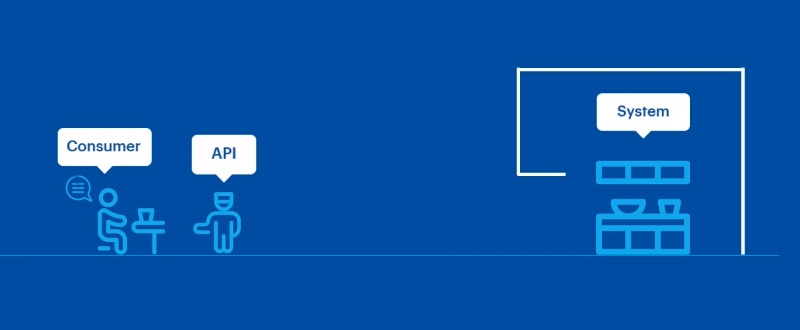Importance of Project Management
For example, using manual project management methods such as spreadsheets become quite inefficient because they cannot be automated, it is not flexible, and becomes too complicated when documenting complex projects. It falls short in agility when constructing reports and relies on manpower to correct any incorrections.
Therefore, project management software has become a tool that is essential to a business, and through this blog, we explore how organisational performance can be improved significantly with the support of proper tools.
The main aim of project management is to develop and manage a project to effectively complete its planned goals and deliverables. It entails identifying and managing risks, careful resource management, smart budgeting, and strong communication across teams and stakeholders. Let’s take a deeper look at it!
Benefits of an Automated Project Management Software
1. Clearly Defined Scope
Firstly, having project management in place means there would be a clearly defined scope to guide your team and keep them motivated to complete the tasks. For example, if Glenn Maxwell, an Aussie Cricketer, and all-rounder, never had a defined scope such as the boundary line which differentiates between a 6 and a 4 in terms of the score and the runs between the two-wicket stumps, there would be little direction and motivation for him to be a successful player. Having those boundaries gives him an idea of how to reach the desired target. Therefore, a team guided with a clear scope or in other words a range or a setting will have increased performance compared to a team with just a target but no scope.
2. Clear Ownership for Project Success
When project management software is used, there is clear ownership when a goal is met as it identifies which project owner logged in, did what, and when. This gives an opportunity for your team members who are performing well to be recognised for their hard work. This also allows you to detect those employees who contribute less, so you can delegate resources efficiently or even strike up a conversation during performance appraisals; wouldn’t this help you explore the root cause of a challenge and fix it accordingly?
3. Organisation and Planning
Planning is vital when it comes to time-sensitive projects because if it is not delivered on time, you could experience customer churn or have the reputation of your organisation permanently damaged. Project management software allows employees to be on track with notifications of deadlines coming up and have tasks clearly assigned to them. Poor planning will not only cause increases in costs and customer dissatisfaction, but it will also leave an organisation open to additional unforeseen risks such as data leaks if a security policy is not clearly communicated.
4. Budget and Cost Management
Sticking to a budget is more difficult than one may think. It will be easy to slip and go over budget or end up with a low-quality solution trying to spend as less as possible. Having a realistic budget and tracking it regularly would allow the team to stay on track while delivering a solution of the desired quality. Extra tip: budget management should also be captured in your organization’s overarching strategy. Read our blog “The Importance of Linking the Budget and Risk Management to Organization Strategy” for more information.
5. Schedule Management/Meeting Customer Commitments and Deadlines
Having deadlines in place for each step is important to make sure the ultimate solution is delivered on time. Deadlines make clear what is expected to be delivered and when. This allows the team to take control of their work, prioritise, stay motivated, and avoid confusion.
6. Risk Management
There may be many risks when it comes to completion of a project such as a hardware failure that would lead to all data being wiped off, a key employee falling sick and not being able to complete the task, or something as unbelievable as your office space being destroyed by some natural disaster and so on. Therefore, it is always important to have contingency plans in place to ensure the seamless flow of operations. That’s why automated project management software such as Camms.Project is important to allow the team to prioritise tasks that are vital to the successful completion of the project, assist remote access, and ensure no data losses occur despite unforeseen circumstances.
7. Solution Quality
Combining technology and project management would allow organisations to get the best use of project management. In this age where technology supports companies to make their everyday workload easier, integrating a solution for project management would allow organisations to reap many benefits. Camms.Project has many flexible options with rapid deployment. It also comes with features that take project management to the next level with quarterly updates. Let’s get into this in a bit.
8. Project Scope Management
This point is connected to the first point about having a clear scope. Creating a clear scope is the process of Project Scope Management. This tool allows the project manager or the team directly involved in the project to be able to track each and every point listed in this blog by avoiding constant changing requirements, pivoting the project direction when you are already mid-way, realising that the final outcome isn’t what was expected, falling behind the project deadlines and having issues with sticking to the specified budget.
Keeping these in mind, let’s see how Camms.Project helps you achieve the above-mentioned factors with ease and convenience.
How Camms.Project Helps You Achieve a Solid Project Management Process
There are many useful features in Camms.Project that helps in accurate planning, budgeting, time management, and creating clear and flexible workflows.
Those include:
- Portfolio and programme governance – Manage your portfolios and programmes in a single place, with inbuilt reporting outputs and dashboards to help you effectively run your enterprise PMO.
- Project planning and management – Easily manage your projects day-to-day, with a powerful workflow engine that can dynamically adapt to your processes and build on global best practices.
- Task planning – Effectively manage your project tasks, with built-in alerts, centralised quick updates for individuals, and a mobile app to help you get work done no matter where you (or your team) are.
- Benefits realisation management – Ensure that projects deliver on the key goals they set out to achieve, track progress against key performance indicators, and capture lessons learned to build an in-house knowledge library.
- Budgeting and financials – Prepare preliminary budget estimates, and once approved, track your income and expenses progression and prepare ongoing forecasts. Follow the progress of invoices and purchase orders to help your project managers be across their financials and track expenditure.
- Time management – Our time entry portal allows staff to enter the hours they’ve worked alongside different tasks and projects, all of it prepopulated based on your project plans, making it easy for you (and them) to track where resources are going.
- Flexible workflows – Not every project has the same workflow – sometimes things are complicated, and other times you need to be nimble. Our flexible workflows mean you can deal with all kinds of projects, big and small, in one system.
If you’re interested to learn more, visit our Virtual Consulting page and book a session with an expert to clarify any queries you might have. That’s not all, we provide one-to-one training sessions and courses on software implementation too.
If you require more information, email us at cammscollege@cammsgroup.com.








